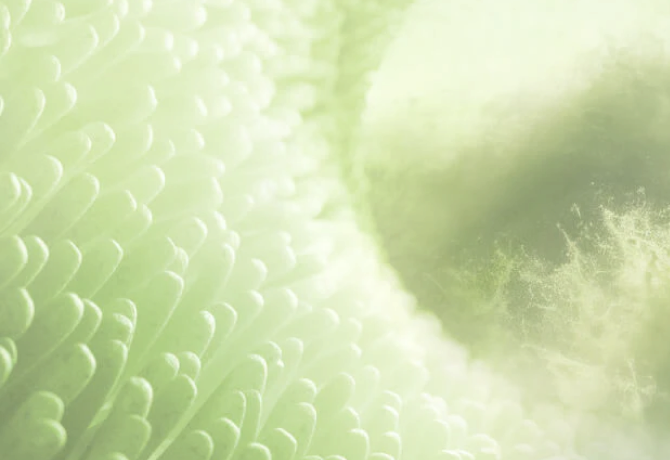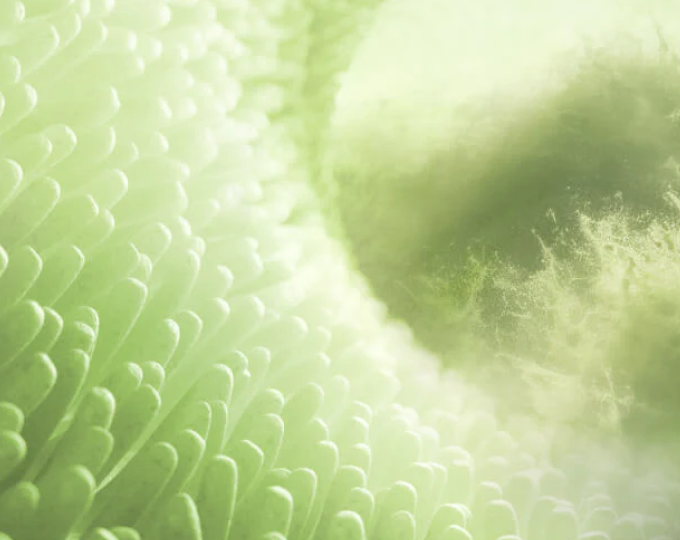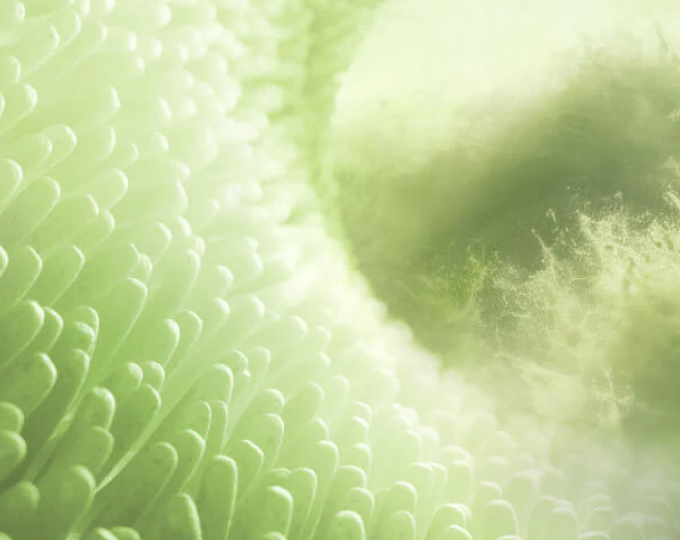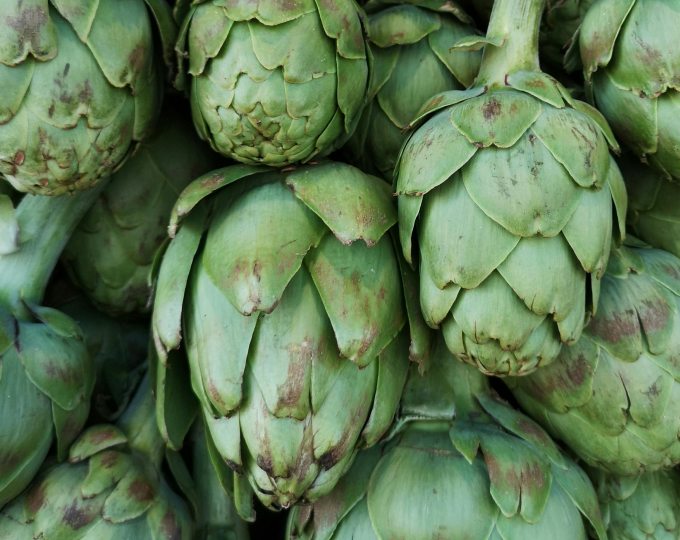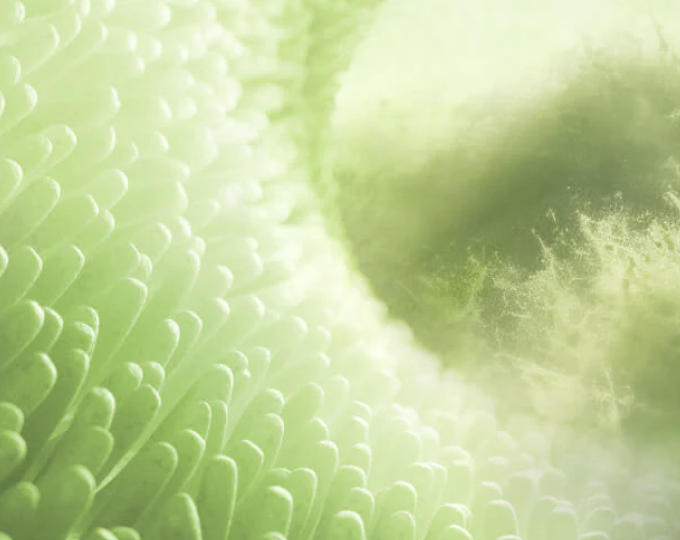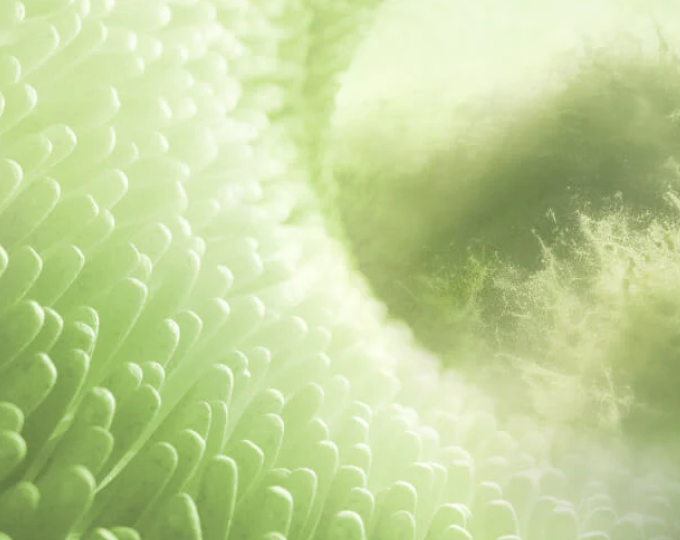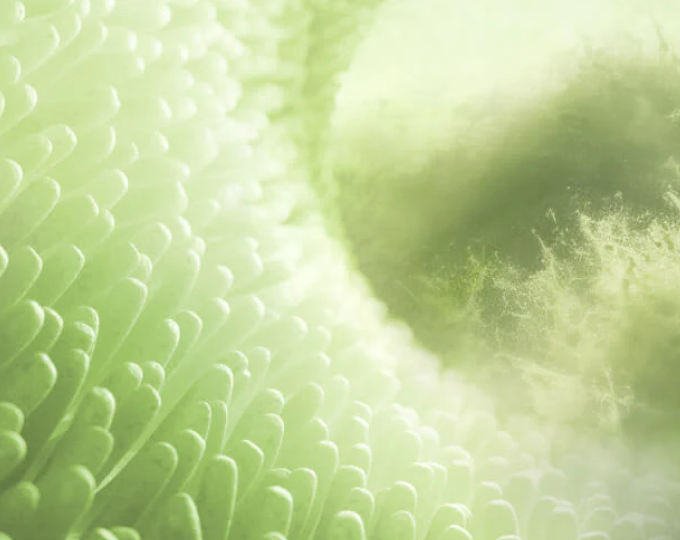Themen dieses Blogartikels:
Table of contents
- The digestive system – structure
- Functions of the digestive tract
- When your gut empathizes – the gut-brain axis
- Your center in balance – the intestine as your stress detector
- Food for your microbiome – a good gut feeling
- Pro-, pre- and symbiotics – the food for your intestinal bacteria
- Probiotics: The Power of Living Microorganisms
- Prebiotics: Food for your microbiome
- Symbiotics: When everything works together perfectly
- The role of selected bacterial strains
- More everyday tips for a healthy gut
- Conclusion: Holistic support for your intestines
Its main task is to digest the ingested food and absorb water. However, it also produces various hormones and neurotransmitters. Another important task of your intestine is the defense against pathogens.
How does your intestine work and why is it responsible for your decisions? Strengthen your longest organ system.
The digestive system - structure
The term "digestive system" refers to the path your food takes in your body to be broken down, absorbed, and utilized. Officially, it begins in the mouth : There, the food is first broken down and mixed with saliva. It then travels through the pharynx and esophagus to the stomach .
In the stomach, gastric acid and enzymes take over the digestion process before the food is passed on to the small intestine . This is where the greatest nutrient absorption takes place. The intestinal mucosa has an enormous surface area (if all the intestinal villi and crypts are spread out, this results in an area of up to 400 square meters).¹
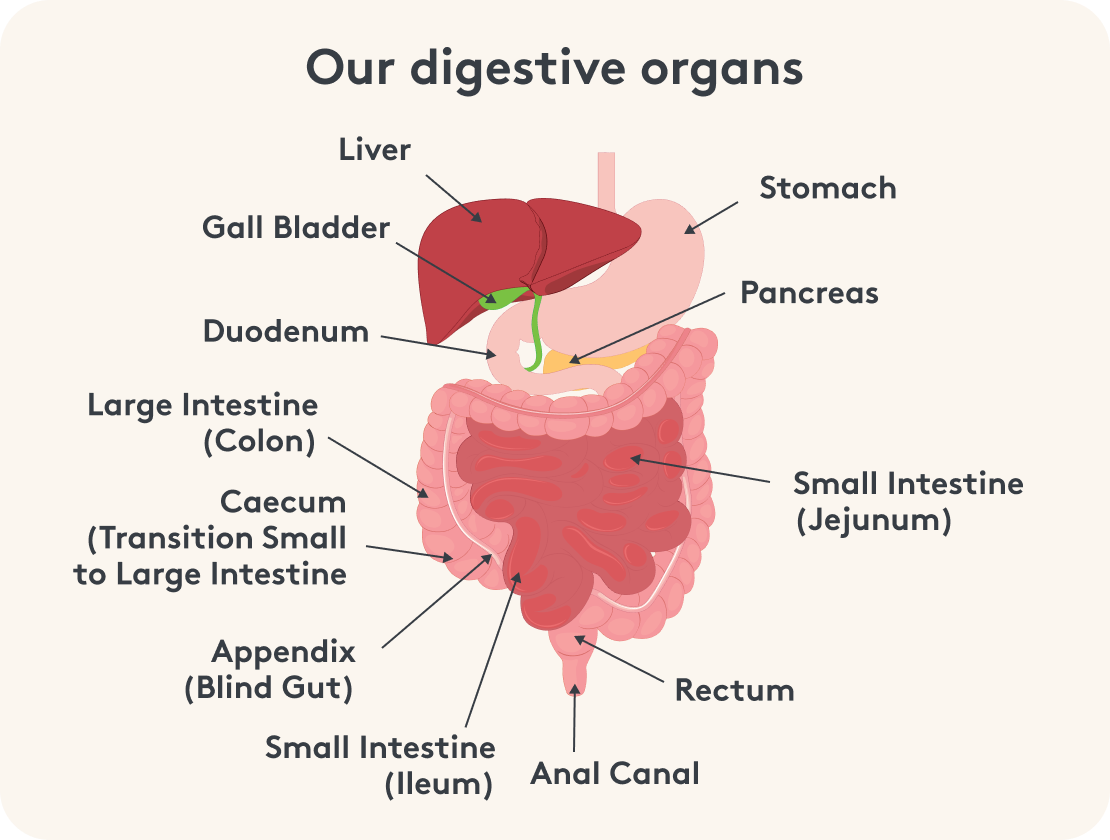

Everything that is indigestible moves on to the large intestine , where important bacteria live that can ferment fiber and produce vitamins or short-chain fatty acids.
The final section is the rectum , at the end of which is the anus . Everything your body can't use is now excreted. This cycle already demonstrates how closely intertwined your diet, your bacteria, and your overall intestinal health are.
Functions of the digestive tract
The functions of your digestive system are complex. Here's an overview of the most important tasks:
• Mechanical and enzymatic comminution
• Storing food in the stomach
• Transport of food through the entire digestive tract
• Splitting (catabolism)
• Absorption of the digestible substances into the blood and lymphatic system
• Excretion of the indigestible food residues
• Production of metabolic products
• Immune barrier through the mucosa
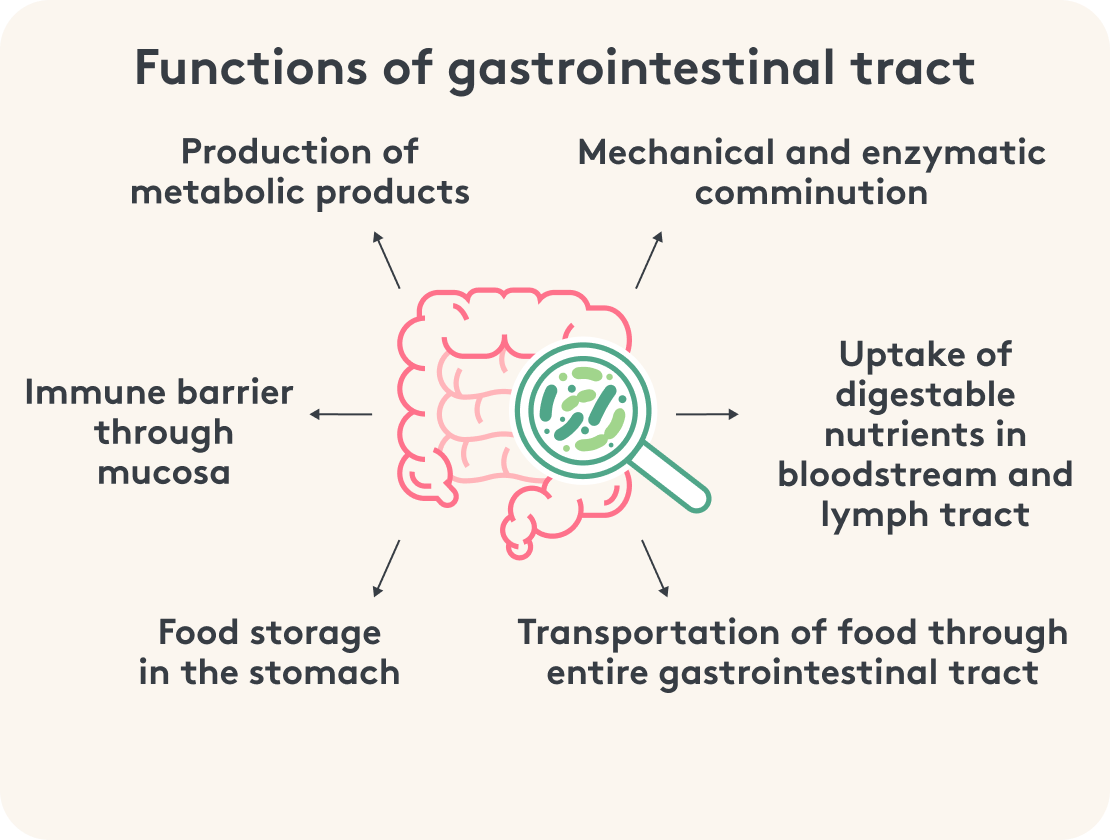

The big surprise for many: A large part of your immune system is located in the intestinal mucosa.³ This makes it clear that an intact intestinal flora and a healthy mucosal barrier contribute significantly to disease prevention .
When your gut empathizes – the gut-brain axis
The intestine has its own nervous system : the enteric nervous system (ENS), often referred to as the "gut brain." An impressive 100 to 200 million nerve cells crisscross the walls of your gastrointestinal tract. These cells are far from simply "followers" of your central nervous system (CNS); they make independent decisions regarding digestion , blood flow , and motor function. ²
Did you know that 90% of serotonin is created in our gut, controlling our gut activity as well as brain production? Proverbs like "a good gut feeling" or "butterflies in the stomach" take on a whole new meaning.
But not only our intestines and our brain are in constant exchange, our intestinal bacteria also have something to say. They can significantly influence communication and decide, for example, whether we feel full or have ravenous appetite. Our emotional life and our stress resistance are also related to these small, numerous inhabitants. The production of the respective neurotransmitters is also often an interplay between intestinal cells and bacteria
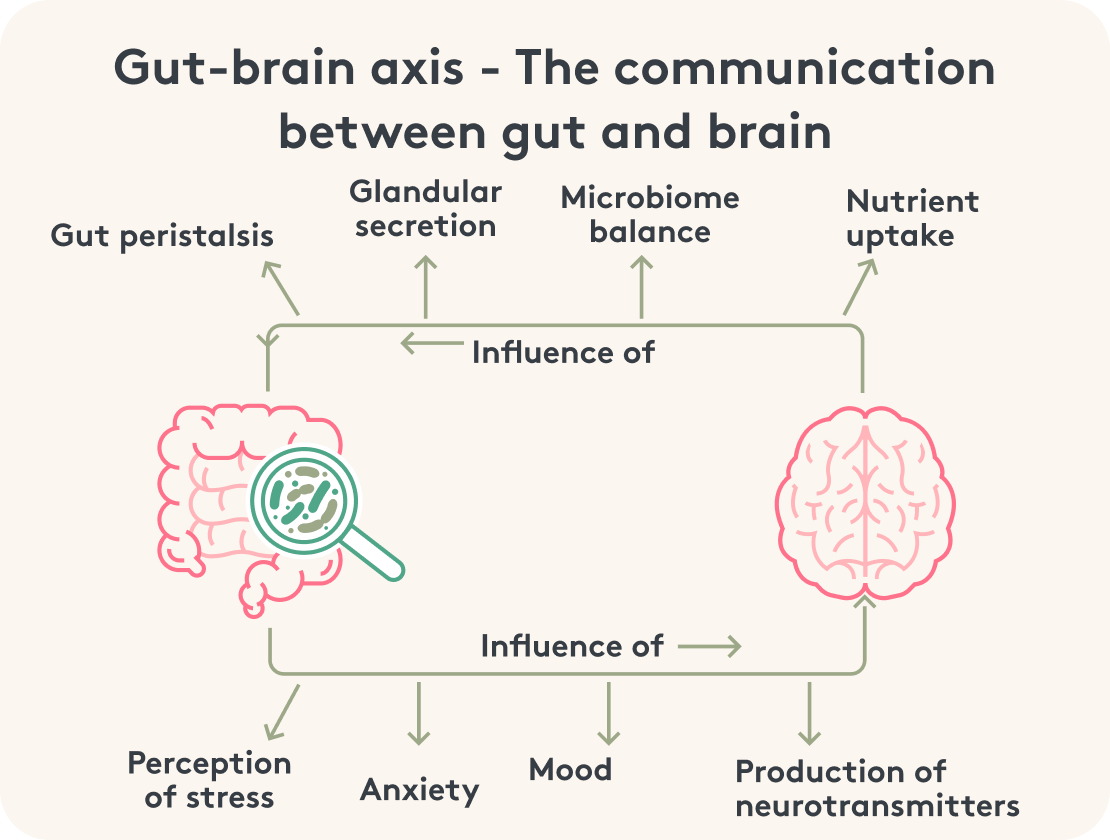

Remarkably, 90% of serotonin —often known as the "happy hormone"—is produced in your gut.⁴ It not only contributes to the regulation of intestinal activity but also influences mood and stress processing . The proverbial "butterflies in the stomach" when we're in love, or that "gut feeling" before an important decision—all of this can be traced, at least in part, to the gut-brain axis.
But it's not just your intestinal tissue that plays a role here. The bacteria living in your gut are also part of this communication chain: They can produce certain substances themselves or stimulate their production in your intestinal cells. Thus, they help determine whether you feel full or whether you crave certain foods—for example, something sweet or savory⁴.
Your center in balance - the intestine as your stress detector
"Chronic stress makes you sick". You've probably heard this statement before, right? Our intestines are particularly sensitive. If the intestines are stressed, this in turn can hit us on the psyche and affect our general well-being. This in turn can hit our gut and a vicious cycle begins. In addition, an increased release of stress hormones can also lead to a decline in beneficial bacteria and thus a shift in our gut bacterial balance. Conversely, our intestinal flora can also ensure greater stress resilience (resistance). That is why it is especially important to feed your little helpers well and to take care of their well-being.
In such a state, “bad bacteria” can gain the upper hand more easily and “good bacteria” can be displaced. A disturbed gut flora can in turn further reduce stress resistance - creating a vicious circle: high stress → disturbed gut → poorer stress management → more stress again.
This makes it all the more important to develop strategies to keep your center in balance. These include:
Mindfulness & relaxation: regular breaks, targeted breathing exercises and meditation can reduce stress levels.
Exercise: Moderate exercise, such as walking or light training, supports intestinal transit and promotes better blood circulation.
Sleep: Sufficient and good sleep helps with regeneration and supports your immune system.Diet: A gut-friendly diet with sufficient fiber, probiotics and prebiotics can improve the bacterial balance.
Diet: A gut-friendly diet with sufficient fiber, probiotics and prebiotics can improve the bacterial balance.
Food for your microbiome – a good gut feeling
Your microbiome consists of trillions of microorganisms, including bacteria, viruses, and fungi. This colonization begins early in life—for example, during birth and through breastfeeding—and continues to change throughout your life. A diverse microbiome helps keep your gut in top shape by:
- Fiber is fermented to produce short-chain fatty acids (e.g. butyrate ), which have an energy- and inflammation-regulating effect.
- Supports vitamin synthesis (e.g. some B vitamins).
- keeps the intestinal barrier stable and thus makes it difficult for unwanted substances to penetrate.
- stimulates and modulates the immune system .
- can displace harmful bacteria and neutralize their toxins.⁵
If there is a lack of “good” bacterial strains in the intestine or if there is an imbalance (dysbiosis), this can lead to digestive problems , increased susceptibility to infections , skin problems , low moods and many other symptoms.
The good news: You can do a lot to support your microbiome. A diet rich in vegetables , fruits , legumes , and complex carbohydrates is a perfect start to providing your bacteria with enough food. Special probiotics and prebiotics can also help restore or maintain the natural balance.⁵
Pro-, pre- and symbiotics - the food for your intestinal bacteria
What are the differences between prebiotics, probiotics and symbiotics and which of these options is best for you?
Probiotics
The word probiotics is composed of pro, meaning "for" and the ancient Greek word bios, meaning "life". This refers to living microorganisms. Consuming them in sufficient quantities can bring health benefits. Bifido, or lactic acid bacteria are most commonly referred to as probiotics. They occur naturally in foods. Fermented foods in particular, such as kimchi, miso, kefir, sauerkraut and pickled vegetables, are rich in probiotic strains of bacteria. An important requirement is that they survive the stomach as well as the small intestine and arrive in the large intestine, where they then take hold. There they act by increasing the number of good cultures. Whether they persist depends on diet and health status.
Prebiotics
Prebiotics are food components that are indigestible for us, but serve as nutrients for intestinal bacteria. They enter the large intestine and can be metabolized there, especially by beneficial bacterial strains. These can thus prevail against harmful bacteria and displace them. Well-known prebiotics are flax and psyllium seeds, oat bran, resistant starch from cooked and cooled potatoes, but also components from chicory, artichokes, parsnips or Jerusalem artichokes. When eating, pay attention to your gut feeling. Each person has a very different composition of intestinal flora and therefore requires different prebiotics. Some prebiotics even increase the formation of butyrate and thus promote intestinal diversity.
Pro-, pre- and symbiotics – the food for your intestinal bacteria
Probiotics , prebiotics , and symbiotics form the basis of targeted support for the intestinal flora. While probiotics are living microorganisms , prebiotics are their food source . Symbiotics combine both approaches in one product or nutritional form.
Probiotics: The power of living microorganisms
The term "probiotics" is derived from "pro" (for) and "bios" (life) and describes live bacteria (or yeast) that, when consumed in sufficient quantities, can enrich your microbiome.[⁵] However, this only works if they:
- Survive the stomach and small intestine alive – that is, be resistant enough to stomach acid and bile acids.
- Settle in the large intestine and assert themselves against bacteria already present.
Well-known probiotic foods are fermented products such as:
- kefir
- Yogurt (especially natural yogurt)
- Sauerkraut and Kimchi
- Miso and Tempeh
- Pickled vegetables such as cucumbers or carrots
However, not everyone likes or tolerates fermented foods. Furthermore, the probiotic content in foods can vary greatly. For this reason, many people turn to probiotic supplements or combination products to specifically supply their intestinal flora with high-quality bacterial cultures.
Prebiotics: Food for your microbiome
In contrast to probiotics, prebiotics are not microorganisms, but indigestible (for humans) or only partially digestible substances that serve as food for the “good bacteria.”⁵ Well-known prebiotics are:
- Inulin and oligofructose (e.g. in chicory, Jerusalem artichokes, artichokes)
- Flaxseed and psyllium seeds (rich in fiber and mucilage)
- Resistant starch (e.g. in cooked and cooled potatoes or rice)
- Oat bran (contains beta-glucan)
These prebiotics promote the growth of beneficial strains like Bifidobacterium and Lactobacillus , helping to crowd out harmful germs.⁵ However, some people are sensitive to too much inulin or oligofructose, so be sure to find your personal tolerance level.
Symbiotics: When everything works together perfectly
Symbiotics are a combination of probiotics and prebiotics . The idea is that the probiotic bacteria are provided with their "favorite food" directly. This increases the likelihood that they can establish a colony in the intestine and are not immediately displaced by competition. Often, additional substances (e.g., bitter substances) are included that strengthen the intestinal mucosa or stimulate digestive juices .
Those who want to specifically improve their intestinal flora will find symbiotics to be a highly effective support. If you decide to use such a supplement, make sure it contains high-quality ingredients and uses different bacterial strains to ensure the broadest possible support.
Probiotic foods
Probiotic foods are an excellent way to incorporate live microorganisms into your diet. Some of the most well-known probiotic foods include unheated kefir, kombucha, apple cider vinegar, tempeh, and fresh sauerkraut. These foods contain live cultures that can positively influence your gut flora.
By consuming these foods, pathogenic bacteria such as clostridia and certain types of E. coli can be kept in check. Probiotic foods therefore not only support digestion but also contribute to overall intestinal health.
Prebiotics in the diet
Prebiotics are found in many foods and play an important role in gut health. Vegetables and whole grain products are particularly rich in prebiotics. Some food manufacturers also add prebiotics to their products to make them higher in fiber and thus "healthier."
Prebiotic foods include chicory, Jerusalem artichokes, onions, garlic, salsify, artichokes, and bananas. To achieve a health-promoting effect, approximately five grams of prebiotics per day are needed. This amount can easily be achieved through a balanced diet.
Prebiotics and polyphenols
Prebiotics and polyphenols are a useful supplement for intestinal health. Polyphenols are secondary plant compounds that are activated by intestinal bacteria and offer numerous health benefits. They have antioxidant and anti-inflammatory effects, thus supporting intestinal health.
The combination of probiotics, prebiotics, and polyphenols can have particularly positive health effects. While prebiotics feed the beneficial gut bacteria, polyphenols provide additional support for the immune system and the intestinal barrier.
The role of selected bacterial strains
Within probiotics and symbiotics , it's particularly interesting to know which bacterial strains they contain. Here's an overview of commonly used and scientifically well-researched cultures:⁵
1. Bacillus subtilis
- A spore-forming bacterium whose spores can survive the acidic stomach tract.
- Can help maintain balance in the intestines and keep unwanted germs at bay.
2. Bifidobacterium animalis ssp. lactis
- Known for its ability to improve overall intestinal flora and produce beneficial metabolites.
- Often used to maintain a stable immune system .
3. Bifidobacterium bifidum
- Particularly common in infants and young children.
- Helps in the digestion of carbohydrates and strengthens the intestinal barrier .
4. Bifidobacterium breve
- Is involved in the fermentation of fiber and supports the formation of short-chain fatty acids (e.g. butyrate).
- Promotes diversity in the microbiome.
5. Bifidobacterium longum subsp. infantis
- Also widely used in infants, where it is important for the digestion of breast milk components.
- May also provide benefits in adulthood, e.g., for a strong intestinal barrier.
6. Bifidobacterium longum
- Considered an “all-rounder” among bifidobacteria and is found in many probiotic preparations.
- Supports the breakdown of indigestible food components and strengthens the immune system.
7. Lactobacillus gasseri
- A lactic acid bacterium that can survive particularly well in stomach acid .
- Can help maintain body weight balance (often studied in metabolism studies).
8. Lactobacillus paracasei
- Promotes healthy intestinal transit and supports the immune system .
- Can displace harmful bacteria and protect the intestinal mucosa.
9. Lactobacillus rhamnosus
- Remarkably robust against stomach acid and bile acids , so it reaches the large intestine well.
- Often researched in areas such as allergies and skin health (e.g. eczema).
10. Lactobacillus salivarius
- Occurs not only in the intestines but also in the mouth .
- Can positively influence the oral and intestinal microbiome simultaneously.
The targeted blend of several of these strains can deliver the greatest benefit to your gut, as it covers as many functional areas as possible – from strengthening the intestinal barrier to fermenting various fibers to immune modulation. ⁵
Products with probiotics
There are a variety of probiotic products specifically designed to support your gut flora. These include probiotic capsules, powders, and drinks. When choosing a probiotic product, it's important to pay attention to the number of microorganisms it contains.
A good probiotic should provide at least one billion live microorganisms (10^9 CFU) per daily dose. Products containing high numbers of lactic acid and bifidobacteria are particularly recommended, as these strains are particularly well-researched and effective.
More everyday tips for a healthy gut
Apart from the targeted intake of probiotics, prebiotics or symbiotics, you can do a lot for your intestinal health with a few everyday habits:
1. Eat slowly and chew well
- Digestion begins in the mouth. If you eat hectically and barely chew, you place unnecessary strain on your stomach and intestines.
2. Regular meals and eating breaks
- A regular rhythm supports the “Migrating Motor Complex” (MMC), a type of cleansing transport through the intestine.
- After eating, you should leave at least 3-4 hours of rest so that the digestive processes can be optimized.
3. High-fiber diet
- More vegetables , fruits , legumes and whole grain products provide natural prebiotics.
- Pay attention to variety: Different fibers promote different strains of bacteria.
4. Sufficient fluid
- Drinking enough fluids (preferably water or unsweetened tea) keeps the stool supple and supports bowel function.
- With higher fiber intake, sufficient water intake is particularly important.
5. Incorporate movement
- Light exercise, yoga or walks stimulate intestinal activity and promote blood circulation.
- If you sit a lot, you should take regular breaks to stand up and stretch.
6. Stress management
- Chronic stress can disrupt intestinal balance. Schedule conscious downtime, use relaxation techniques or practices such as progressive muscle relaxation, meditation, and breathing exercises.
7. Sleep hygiene
- Sufficient sleep is essential for a healthy body. Sleep also allows the intestines to regenerate.
- Try to establish a regular sleep-wake rhythm.
8. Targeted bitter substances
- Foods such as chicory, artichokes, radicchio, dandelion or gentian root extracts can stimulate the production of bile and digestive juices, which in turn improves nutrient absorption.
- In combination with pre- and probiotics, bitter substances can provide additional support to the intestines.
Conclusion: Holistic support for your intestines
Your gut is a highly complex system in which bacteria , nerves , and hormones are closely intertwined. A balanced gut flora means better digestion , greater vitality , more stable emotions , and an overall improved sense of well-being. To keep your microbiome healthy or restore its balance, it's worth looking into probiotics , prebiotics , and symbiotics .
Probiotic foods and corresponding bacterial strains (such as Bifidobacterium longum or Lactobacillus rhamnosus) can help increase the number of beneficial intestinal inhabitants. Prebiotic fiber such as inulin, psyllium, or resistant starch provides the right nutrition for these bacteria. Symbiotic provides both in a convenient package.
It is also important to work on your daily habits beyond simply supplying bacteria: A low-stress lifestyle with plenty of exercise, fresh, nutrient-rich foods, sufficient rest and sleep, and good chewing habits can signal to your gut that it is working in a safe, supportive environment .
Especially if you suffer from recurring digestive problems or a weakened immune system, it can be worthwhile to pay special attention to your microbiome. Combinations of different strains—such as Bacillus subtilis, Lactobacillus gasseri, or Bifidobacterium breve—often prove particularly effective. They complement each other and provide the widest possible range of beneficial effects.
Ultimately, you can trust your gut instinct: Pay attention to your gut feeling , observe which foods are good for you, and how your body reacts to different probiotics or fiber. Your gut is a true miracle that reacts sensitively to changes—both positive and negative. However, those who consciously care for their "subtenants" create a solid foundation for quality of life , health , and balance well into old age.
This article is based on carefully researched sources:
Sources & Bibliography
- Sender R, Fuchs S, Milo R – Revised estimates for the number of human and bacterial cells in the body. PLoS Biol. 2016.
- Rao M, Gershon MD – The bowel and beyond: the enteric nervous system in neurological disorders. Nat Rev Gastroenterol Hepatol. 2016.
- Macpherson AJ, Harris NL – Interactions between commensal intestinal bacteria and the immune system. Nat Rev Immunol. 2004.
- Dinan TG, Stilling RM, Stanton C, Cryan JF – Collective unconscious: how gut microbes shape human behavior. J Psychiatr Res. 2015.
- Hill C, Guarner F, Reid G, Gibson GR, Merenstein DJ, Pot B et al. – The International Scientific Association for Probiotics and Prebiotics consensus statement on the scope and appropriate use of the term 'probiotic'. Nat Rev Gastroenterol Hepatol. 2014.
